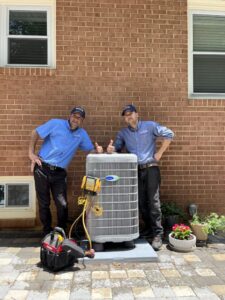
Effective 3D printer nozzle cleaning is crucial to stop frustrating failed prints like tangled messes or half-finished models. Often, these issues trace back to one tiny component: the nozzle.
A clogged, dirty, or partially blocked nozzle doesn’t just ruin one print. It wastes time, material, and halts your creativity.
Fortunately, managing nozzle problems is achievable with the right knowledge. This guide provides a complete walkthrough.
We’ll cover identifying causes and symptoms of clogs, mastering cleaning techniques, preventing future issues, and knowing when a replacement is needed. Let’s restore your printer’s flawless extrusion.
Why Cleaning 3D Printer Nozzles is Crucial
Why focus on this tiny part? Proper 3D printer nozzle cleaning is key for reliable, high-quality prints and printer health.
A clean nozzle ensures smooth, consistent filament flow. This is vital for accurate dimensions, strong layers, and appealing surface finishes – hallmarks of success.
Neglecting nozzle cleaning leads directly to common print defects. Think under-extrusion, gaps, weak layer bonding, and excessive stringing.
Beyond poor prints, a dirty or clogged nozzle wastes filament. It can also strain the extruder motor and hotend, causing premature wear or damage.
Consistent nozzle care is truly an investment in your printer’s performance and longevity.
Understanding 3D Printer Nozzle Clog Causes
To effectively fix a clogged nozzle, first understand why blockages happen and how to spot the signs.
Nozzle obstructions range from partial clogs (inconsistent flow) to complete blockages (printing stops).
Common Causes of Clogged Nozzles
Nozzle clogs stem from various factors, often related to filament, environment, or settings:
- Contaminants: Dust, hair, or debris on filament spools get pulled into the hotend, blocking the narrow nozzle opening.
- Particle-Filled Filaments: Materials with wood fibers, metal powders, carbon fiber, or glitter can cause obstructions if particles are too large or clump together.
- Material Transition Residue: Switching from high-temp (e.g., ABS) to low-temp (e.g., PLA) filament can leave residue that blocks the new material.
- Heat Creep: Excessive heat traveling up the heat break softens filament too early, causing jams. Poor cooling or bad retraction settings are common culprits.
- Filament Quality/Condition: Old, brittle, moist, or low-quality filament often has impurities or diameter inconsistencies, increasing clog risk.
- Incorrect Printing Temperatures: Too cold prevents proper melting; too hot causes degradation and carbonization.
- Prolonged Idle Heating: Leaving the hotend hot without extruding degrades the plastic inside.
Identifying a Clogged Nozzle 3D Printer
Diagnosing a clogged nozzle involves observing the printer and print quality:
- Visual Extrusion Issues: Filament curling upwards immediately or forming thin, wispy strands instead of extruding straight down are strong signs.
- Degraded Print Quality: Look for under-extrusion (missing layer parts), excessive stringing, or completely missing layers.
- Auditory Cues: Listen for clicking or skipping from the extruder motor/gear, indicating struggles pushing filament.
- Manual Extrusion Test: Use printer controls to extrude filament while hot. Little/no filament emerging, or feeling resistance when manually pushing, confirms a likely clog.
3D Printer Nozzle Cleaner Tools
Having the right tools makes nozzle cleaning manageable, not a frustrating chore. A basic kit is invaluable.
Mechanical Cleaning Aids
These tools physically clear the clog or clean the nozzle surface.
- Cleaning Needles/Pins: Fine, stiff wires (like 0.3-0.4mm acupuncture needles) inserted into the heated nozzle tip break up internal blocks. Use the size matching your nozzle.
- Wire Brushes: Essential for removing burnt filament from the nozzle/heater block exterior. Use Brass brushes for soft brass nozzles (prevents scratches). Steel brushes suit durable hardened/stainless steel nozzles.
- Pliers/Adjustable Wrench: Needed to grip the heater block securely (prevent damage) and unscrew the hot nozzle. Use the correct wrench size to avoid rounding nozzle flats.
Heating Tools for Cleaning
Controlled heat softens or melts filament blockages.
- Printer Hotend: Used for in-place cleaning (cold pulls, needles) or heating the nozzle for safe removal.
- Heat Gun: Offers adjustable temperature for heating removed nozzles. Generally safer than open flames for melting internal clogs.
- Soldering Iron: Applies targeted heat. Good for cleaning threads on removed nozzles or controlled melt-outs without overheating.
- Blowtorch: Provides intense heat fast, but use with extreme caution. Risks of overheating/damaging the nozzle (especially hardened steel). Best avoided unless other methods fail.
Solvents and Cleaning Agents
Chemicals dissolve specific plastics, helping clean a removed nozzle.
- Solvents: Acetone dissolves ABS, ASA,and HIPS. Ethyl Acetate (check non-acetone nail polish) might work on PLA/PETG. Nylon resists common solvents. Verify compatibility and use in a well-ventilated area safely.
- Isopropyl Alcohol (IPA): Good for general cleanup, but doesn’t typically dissolve filament clogs.
- Cleaning Filament: A special filament that purges residues when extruded. Effective for routine maintenance between filament types.
Safety and Supporting Gear
Working with heat and chemicals requires protection.
- Safety Equipment: Heat-resistant gloves are essential for hot nozzles/blocks. Safety glasses protect eyes.
- Cloths: Lint-free cloths or sturdy paper towels wipe melted plastic without leaving fibers.

How to Clean 3D Printer Nozzles: Step-by-Step Methods
Various techniques exist, from quick fixes with the nozzle installed to thorough methods requiring removal. The best approach depends on clog severity and material.
The Cold Pull (Atomic Pull) Method
Highly effective for partial clogs, residue, or small debris.
- Heat Up: Heat nozzle to the filament’s normal print temp (or slightly higher).
- Extrude: Manually push fresh filament (Nylon often preferred) through until clean flow.
- Cool Down: Reduce temp significantly (e.g., 90°C PLA, 150°C Nylon) to solidify filament and grab the clog.
- Pull: Once at the lower temp, firmly and swiftly pull the filament back out.
- Inspect: Check the pulled tip for the nozzle’s internal shape and embedded debris/color.
- Repeat: Repeat until the tip is clean. Works well for PLA, PETG, ABS, Nylon residue.
How to Clean Nozzle with Needles
A quick fix for minor blockages at the very tip.
- Heat Up: Heat nozzle slightly higher than the filament’s normal print temp.
- Insert Needle: Carefully insert the correctly sized cleaning needle straight up into the orifice.
- Agitate Gently: Move the needle gently in/out and slightly around to break blockage. Avoid force.
- Extrude: Try manually extruding filament to push out dislodged debris.
External Nozzle Clean: Heat and Brushing
Cleans residue buildup on the nozzle exterior and heater block.
- Heat Up: Heat nozzle to operating temp (e.g., ~200-220°C).
- Brush: Wear gloves. Use the appropriate wire brush (brass for brass, steel for steel) to scrub melted plastic off nozzle/block.
- Wipe: Use a lint-free cloth to wipe remaining residue while hot (use caution!).
Deep Cleaning Nozzles: Heat Guns or Torches (Removed Nozzle)
Severe clogs require nozzle removal and extreme caution.
- Heat and Remove: Heat the hotend (e.g., 220°C+). Use wrenches to grip nozzle flats and counter-hold the heater block. Carefully unscrew the nozzle.
- Secure Nozzle: Hold the removed nozzle with pliers (wear gloves!).
- Apply External Heat: Use a heat gun (preferred) or torch to heat the nozzle until the filament melts/burns out. Avoid red heat (risks damage, esp. hardened steel). Never quench hot steel.
- Clear Residue: Use needles/brushes while hot/warm to clear internals.
- Risk: Aggressive heating can distort the nozzle orifice.
Controlled Heating: The Soldering Iron Technique
More controlled heat application for threads or internal melt-out.
- Prepare: Clean soldering iron tip. Consider modifying an old tip.
- Secure and Heat: Hold the removed nozzle securely (pliers, gloves). Apply a hot iron to the nozzle body.
- Melt and Wipe: Wipe oozing filament with a rag.
- Clear Internals: Use a needle/brush while warm to clear the pathway/orifice. Reduces overheating risk vs. torches.
How to Clean Printer Nozzle with Solvents
Chemical dissolution for specific filaments (requires nozzle removal).
- Remove Nozzle: Follow safe removal steps.
- Identify Solvent: Acetone (ABS/ASA/HIPS), Ethyl Acetate (maybe PLA/PETG). Check compatibility/safety.
- Submerge: Place the nozzle in a sealed glass/metal container with solvent. Ensure good ventilation.
- Soak: Leave 24-48 hours for plastic to soften/dissolve.
- Mechanical Clean: Use needles/brushes/air to remove loosened residue. Rinse (IPA).
- Experimental: Carb cleaner/gasoline might work, but check for residues/damage. Use extreme caution.
Prevention Strategies: Avoiding a Clogged Print Nozzle
While cleaning proficiency is useful, prevention is better. These practices dramatically reduce clogs:
Focus on Filament Quality and Handling
- Use Reputable Filament: High-quality material has a consistent diameter, fewer impurities. Avoid ultra-cheap options.
- Proper Storage: Use airtight containers/bags with desiccant to prevent moisture absorption (degrades filament).
- Keep it Clean: Cover spools. Use a filament dust filter (sponge clip) before the extruder input.
Optimize 3D Printer Settings and Maintenance Routine
- Correct Temperatures: Use manufacturer specs; fine-tune with calibration prints.
- Appropriate Retraction: Tune distance/speed carefully. Too many risks heat creep; too little causes stringing.
- Minimize Idle Heating: Lower hotend temp during long pauses to prevent filament degradation.
- Regular External Cleaning: Heat nozzle periodically and brush off exterior residue.
- Purge During Filament Changes: Extrude a generous amount (100 mm+) of new filament to flush old material, especially when changing types/temps.
- Use a Silicone Sock: Helps stabilize block temp, prevents external filament sticking.
- Routine Maintenance: Include nozzle checks and preventative cold pulls in regular upkeep.
Cleaning vs. Replacing: When is a New Nozzle Needed?
Knowing when to clean the nozzle versus replace it is key for efficiency. Consider these factors:
Evaluate Cost vs. Effort
- Brass Nozzles: Very cheap ($1-$3). Time spent on stubborn clogs often outweighs cost. Replacement is frequently fastest.
- Specialty Nozzles: Hardened steel, ruby, etc., are pricier ($15-$100+). Cleaning is usually economically worthwhile.
Consider Material Durability and Potential Damage
- Brass: Soft, easily scratched/deformed by aggressive cleaning. Damage affects print quality. Great thermal conductivity.
- Steel/Hardened Steel: More durable against cleaning and abrasive filaments. Easier to clean repeatedly. Slightly lower thermal conductivity.
- Compromised Precision: If cleaning (harsh heat/scraping) might have damaged the nozzle’s internal geometry or orifice, replace for optimal quality.
Recognize Clear Signs for Replacement
Replacement is best if you see:
- Visible Damage: Deformed tip, significant scratches, rounded wrench flats.
- Significant Orifice Wear: Especially after abrasive materials with brass nozzles (causes poor extrusion).
- Persistent Clogging: Frequent issues despite thorough cleaning suggest internal defects or irreparable wear.
Conclusion: Keep Your 3D Printer Nozzle Clean for Optimal Performance
Mastering 3D printer nozzle cleaning is fundamental for serious FDM/FFF printing. Understanding clog causes, spotting symptoms early, and proficiency in cleaning techniques (cold pull, needles, heat, solvents) empower you to fix common frustrations efficiently.
Embracing preventative habits—quality filament, proper storage, optimal settings—significantly cuts downtime and waste.
While cleaning is often viable (especially for valuable nozzles), remember that replacing inexpensive brass nozzles is often the most time-efficient fix for stubborn blockages.
Ultimately, maintaining your nozzle via diligent cleaning or timely replacement is key to reliable printing and consistently high-quality results.
FAQs
Q: How often should I perform 3D printer nozzle cleaning? A: No set schedule. Clean preventatively when changing filament types, if you notice minor issues, or during regular maintenance. Clean immediately if a clog is suspected.
Q: What are the first signs of a clogged nozzle? A: Look for filament curling, thin/inconsistent extrusion, extruder clicking sounds, or sudden print quality decline (gaps, stringing).
Q: Is it safe to clean the nozzle while it’s hot? A: Yes, many methods require heat. Always use extreme caution, wear heat-resistant gloves, and proper tools to avoid burns/damage.
Q: What’s the best way to clean a nozzle clogged with PLA? A: For PLA, try a Cold Pull first. Needle cleaning (while hot) can clear minor tip blocks. For stubborn clogs, remove the nozzle and carefully apply external heat (e.g., heat gun).
Q: Can I reuse a nozzle after cleaning it? A: Yes, often reusable. Ensure cleaning didn’t damage the orifice. Replace if print quality suffers post-cleaning or the nozzle is visibly worn.
Article Source: https://mtxlaser.com/the-ultimate-guide-to-3d-printer-nozzle-cleaning





